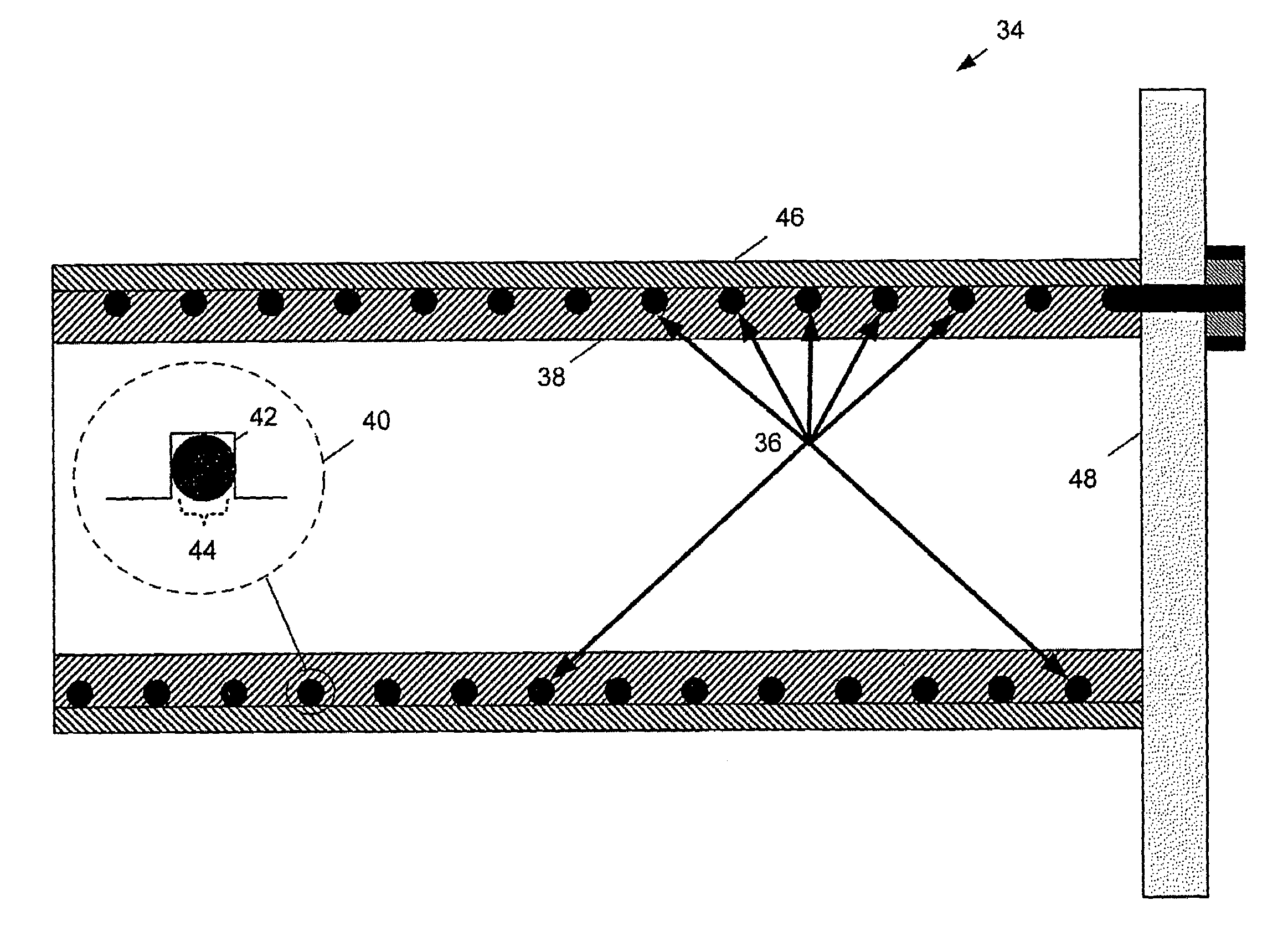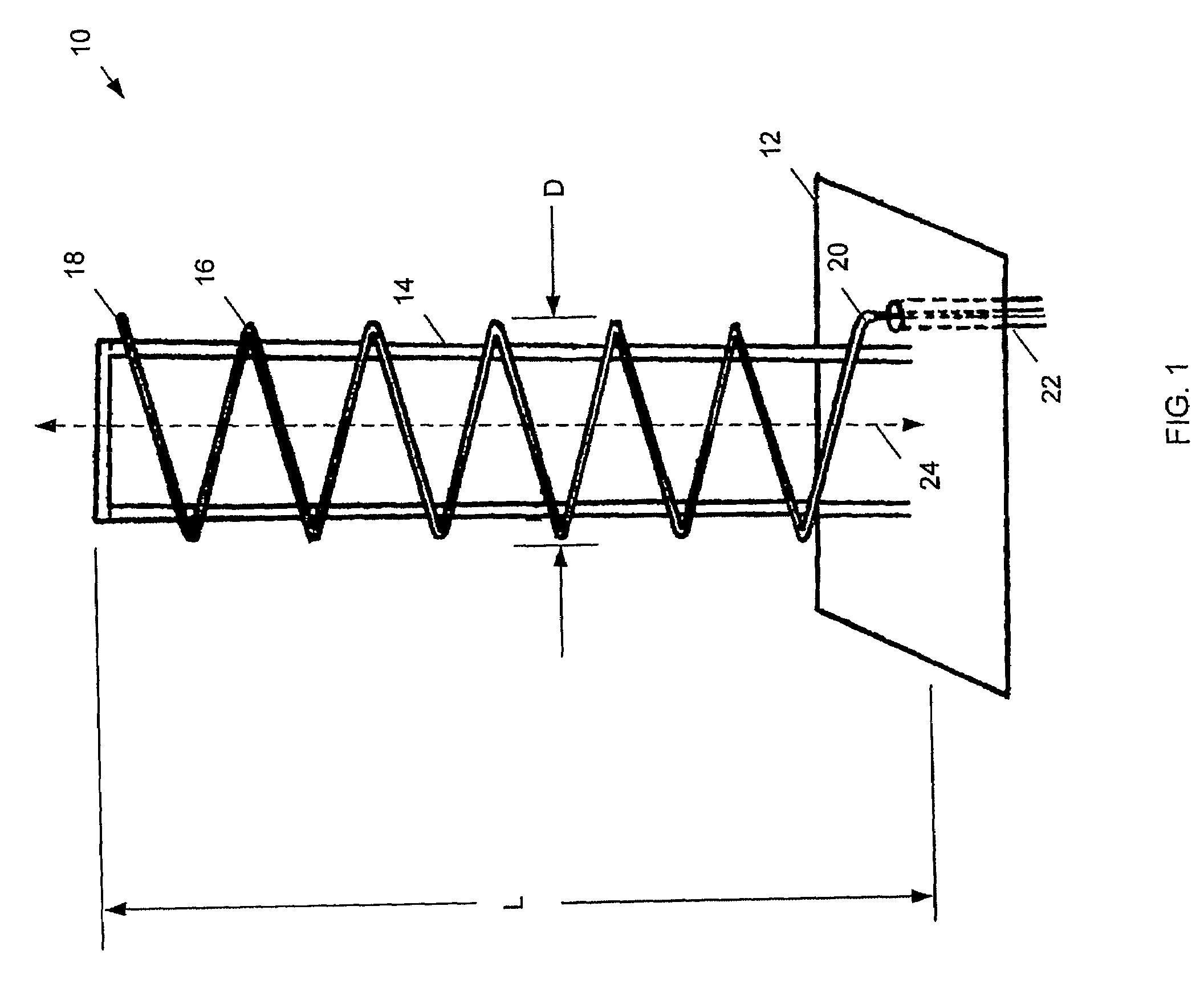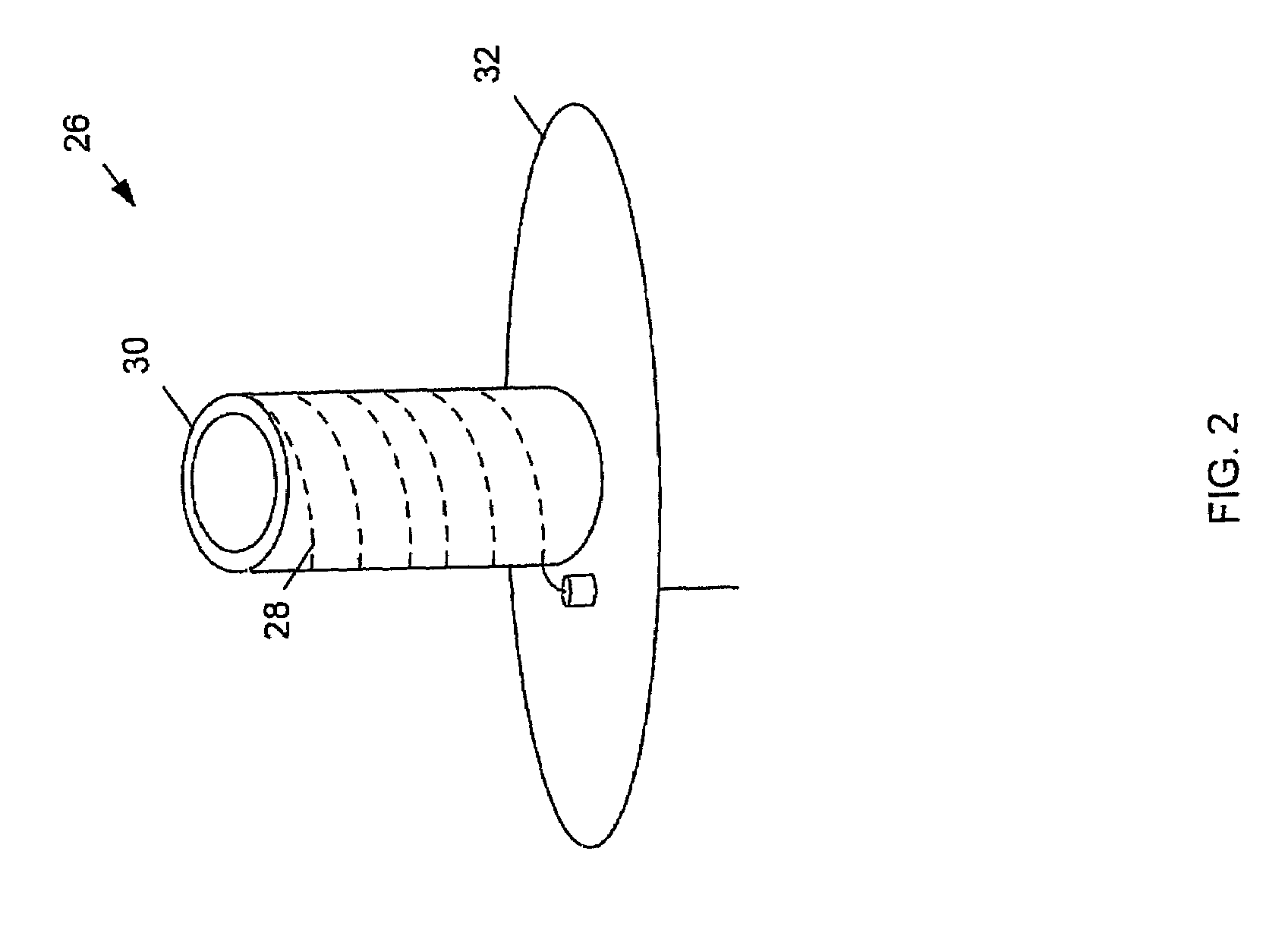Helical antenna system
a technology of helical antennas and antennas, applied in the direction of antennas, antenna details, electrical equipment, etc., can solve the problems of reducing compromising the performance of the antenna, and reducing the efficiency of the antenna, so as to improve the other performance characteristics, reduce the physical dimensions of the antenna, and increase the directivity of the antenna
- Summary
- Abstract
- Description
- Claims
- Application Information
AI Technical Summary
Benefits of technology
Problems solved by technology
Method used
Image
Examples
Embodiment Construction
[0023]Referring to FIG. 1, a conventional helical antenna 10 includes a ground plane 12 upon which a support structure 14 is attached (e.g., bolted, welded, etc.). A conductor 16 is wrapped around support structure 14 in a spiral manner to produce a helical antenna element that may radiate or receive electromagnetic signals. Typically one end 18 of conductor 16 is terminated at the upper portion of support structure 14 and an opposing end 20 of conductor 16 is connected to a signal feed 22 that transfers electromagnetic signals to and / or from the antenna for reception or transmission. When used for transmission, helical antennas such as helical antenna 10 radiate a substantial portion of electromagnetic energy along an axis 24 of the helix that is created by conductor 16. This type of radiation pattern is typically referred to as an “end-fire” radiation pattern. Alternatively, if used for receiving electromagnetic signals, helical antenna 10 provides maximum reception along axis 24....
PUM
 Login to View More
Login to View More Abstract
Description
Claims
Application Information
 Login to View More
Login to View More - R&D
- Intellectual Property
- Life Sciences
- Materials
- Tech Scout
- Unparalleled Data Quality
- Higher Quality Content
- 60% Fewer Hallucinations
Browse by: Latest US Patents, China's latest patents, Technical Efficacy Thesaurus, Application Domain, Technology Topic, Popular Technical Reports.
© 2025 PatSnap. All rights reserved.Legal|Privacy policy|Modern Slavery Act Transparency Statement|Sitemap|About US| Contact US: help@patsnap.com



